#urberg
Text




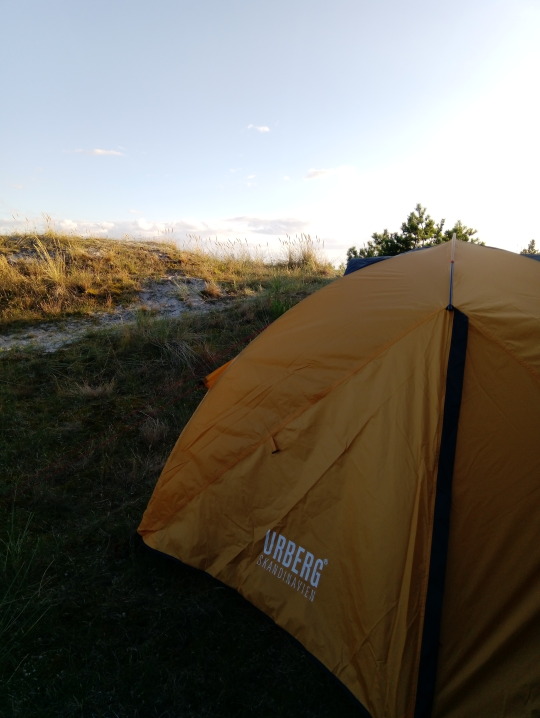
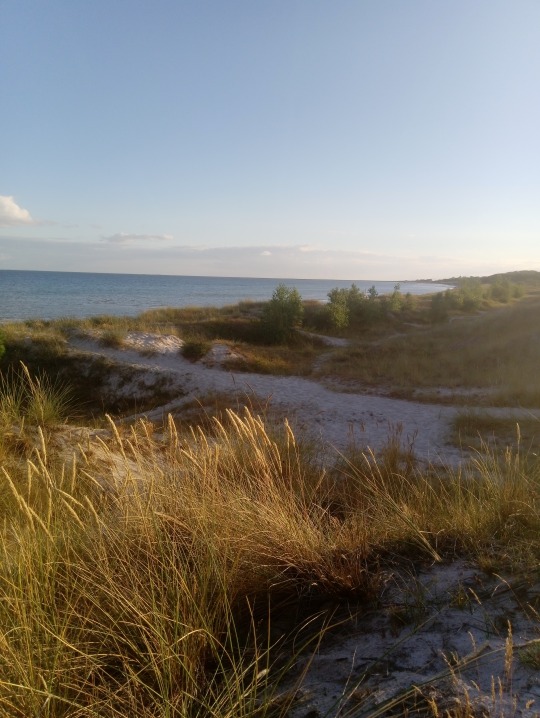

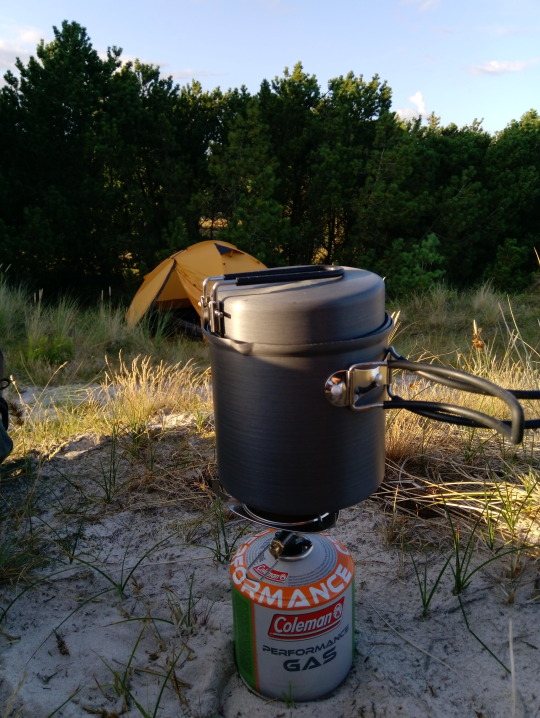

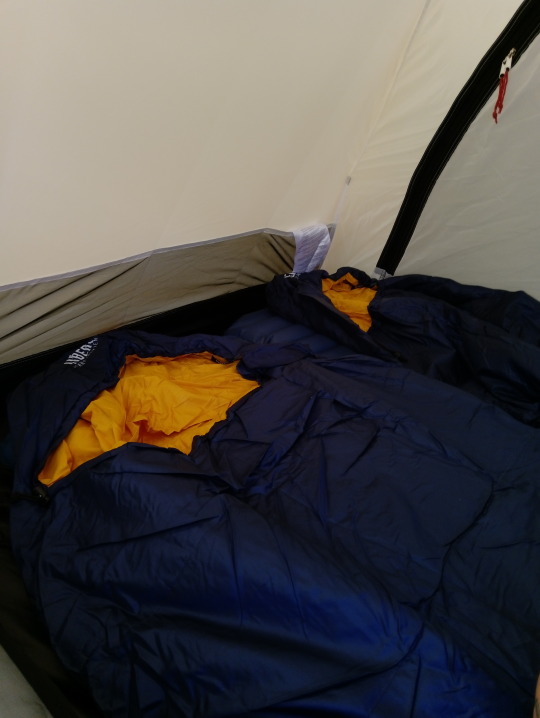

Falsterbo sandstrand
Skåne County, Sverige
#hiking#vandring#falstebo#veliinge#sweden#swedish nature#nature#beach#camping#tant#wandering#outdoors#urberg#landscape#sea#seashore#seaside#shore#greenery
27 notes
·
View notes
Photo

® Postals - Urberg - Dachsberg - Schwarzwald - Baden-Württemberg - Deutschland #postals #urberg #dachsberg #schwarzwald #badenwürttemberg #aolivellacat #deutschland Copyright© 2022 - Amadeu Olivella http://www.aolivella.cat https://www.instagram.com/p/CjgGzvCDbUM/?igshid=NGJjMDIxMWI=
0 notes
Photo

Urbergets mytiska skatter / The mythical treasures of the ancient mountain. Or most famous as the hall of the mountain king. A new song or saga. Sagas here: https://www.youtube.com/channel/UCaV7-9fIKAP4FaMHlqSucpA https://www.facebook.com/Svartabergetart/ #urberg #scandinavia #sweden #järna #inthehallofthemountainking #throne #treasure #ancient #mountain #illustration #digitalart #sketchbookapp #fantasyart #fantasy #darkfantasyart #ancienttreasures #troll (at Trollgrottan) https://www.instagram.com/p/CeRD4f2K66L/?igshid=NGJjMDIxMWI=
#urberg#scandinavia#sweden#järna#inthehallofthemountainking#throne#treasure#ancient#mountain#illustration#digitalart#sketchbookapp#fantasyart#fantasy#darkfantasyart#ancienttreasures#troll
0 notes
Text
Urberg, barrskog, barnskor
Vissa utsikter
från broar
är alldeles
tusenfaldigt blå
motsägeligt tysta
Blicken följer
Umeälvens tvärsnitt
genom landet
tillbaka till
Överumans mun
Hemlängtan är
att le åt alla barn en ser
Att vilja fråga, vad heter du?
Du är liten, jag känner igen dig
Mödrar talar ibland om moderskapet
som något universellt, en biologisk hemlighet
Ett allmänt mysterium bara de kan förstå
Vi förstår nog, vi har nog också känt
Den högsta av kärlek
Utan den världsomvälvande förlossningssmärtan
Utan havandet och givandet och det eviga överlämnandet
Utan den första rörelsen, inuti, mitt i ett organ
Men vi tror dig—vi kan aldrig förstå,
men tro aldrig att vi inte skulle
slita oss själva i stycken
för de som är
våra
0 notes
Text



Bland urberg
http://instagram.com/vittravals
#karolinajacobsen#sweden#scandinavia#photography#me#personal#photo#nature#naturephotography#forest#mountains#hills#wild#sombrescape#sombresociety#sombrescapes#etheral moods#etheral#witchyvibes#ocean#sea#fall#autumn#folklore#vittravals#nikon#landscape#landscapephotography#mystic#occult
29 notes
·
View notes
Video
youtube
Har du vandrat i skogar och bergen allén
långt från celler av glas och betong
Har du smakat på kraften av urberg och sten
Har du lyssnat till myrtallens sång
Have you wandered in forests and on mountains paths
far from cells of glass and concrete
Have you tasted the power of primeval mountain and stone
Have you listened to the song of the pine tree?
Kan du känna hur tidshjulet vrider sig nu
Kan du känna hur allting förskjuts
Kan du känna hur allting i just detta nu
bara rämnar och går mitt itu, vi har nått vägens slut
Can you feel how the wheel of time turns now
Can you feel how everything becomes unsettled
Can you feel how everything in the here and now
just tears and breaks, we have reached the end of the path
Så håll dig stark i anden nu
Vi viker in på lidandets väg
Låt en spelman klä sorgen i toner
för snart stå jag ensammen kvar
Ensammen kvar…
So be strong in spirit now
We embark upon the path of suffering
Let a minstrel clothe sorrow in notes
for soon I will be left standing alone
Standing alone…
Ty se, Imperiet faller nu
Av allt du känner skall intet bli kvar
Har du något du älskar så ger jag mitt råd;
håll fast det du har
Snart finns ingenting kvar
Ingenting kvar...
Vi står ensamma kvar
For see, the Empire falls now
Of all you know, nothing shall remain
If you have something you love, then take my advice;
Hold tight what you have
Soon nothing will be left
Nothing left…
We'll be left standing alone
Har du inte sett nödår så får du det nu
och den svält du ej känt kommer nu
Har du inte noterat förråden är slut
Snart har tider du har runnit ut
If you have not known hard years, you may now
And the hunger you have not felt comes now
Have you not noticed that the stockpiles are empty
Soon the time you have will be over
Då nu okända gudar sina offer berett
Då nu massorna lidandet valt
Är det blott den som utanför ramverket sett
som förstår att det misstag som görs nu kan vara fatalt
Now that unknown gods have prepared their sacrifices
Now that the masses have chosen suffering
Only those who have looked outside over the rim
understand that the error made now can be deadly
Så håll dig stark i anden nu
Vi viker in på lidandets väg
Låt en spelman klä sorgen i toner
för snart stå jag ensammen kvar
Ensammen kvar…
So be strong in spirit now
We embark upon the path of suffering
Let a minstrel clothe sorrow in notes
for soon I will be left standing alone
Standing alone…
Ty se, Imperiet faller nu
Av allt du känner skall intet bli kvar
Har du något du älskar så ger jag mitt råd;
håll fast det du har
Snart finns ingenting kvar
Ingenting kvar...
Vi står ensamma kvar
For see, the Empire falls now
Of all you know, nothing shall remain
If you have something you love, then take my advice;
Hold tight what you have
Soon nothing will be left
Nothing left…
We'll be left standing alone
Arma människa
Bind ditt gissel
Gråt och smärta
Tandagnissel
Poor human
Bind your scourge
Cry and suffer
Gnashing teeth
Sjung vackert om skogarnas och älvarnas land
Sjung vackert fast allting tar slut
Sjung vackert om älvdalens grusklädda strand
Håll fast vid varenda minut
Sing beautifully of the land of forests and rivers
Sing beautifully even though everything ends
Sing beautifully of the stony shores of river dales
Hold on to every single minute
Sjung vackert om frihet och vildmarkens prakt
Sjung vackert om älvar och fjäll
Sjung vackert om naturens slutgiltiga makt
Sjung vackert när dagsljuset sinar i nordlandets kväll
Sing beautifully of freedom and the glory of the wild
Sing beautifully of rivers and hills
Sing beautifully of nature’s ultimate power
Sing beautifully when daylight fails in the northern evening
#folk metal#utmarken#swedish metal#power metal#music#music stuff#isn't this spectacular?#the music that is#the translation is just hopefully correct
4 notes
·
View notes
Text
Nytt erbjudande hos bornsheep.com
Nytt erbjudande hos http://www.bornsheep.com/outnorth-50-rea-pa-allt-fran-market-urberg-galler-endst-idag-14-2-2019/
Outnorth 50% Rea På Allt från märket Urberg - Gäller endst idag - 14/2-2019
Bra inlägg! 0 Bra inlägg! 0
0 notes
Photo

No gym today, took a run instead! #teamenertor #livefit #celsius #CelsiusLiveFit #celsiussverige #urberg #asics #asicsfujirado #jaybirdsx3 #workoutsnap #running #runners #runhappy #löpning #löparglädje #nightrun #puttesnyaliv (på/i Falsterbo)
#workoutsnap#celsius#teamenertor#puttesnyaliv#asicsfujirado#löpning#nightrun#celsiuslivefit#asics#jaybirdsx3#running#runhappy#livefit#löparglädje#runners#celsiussverige#urberg
0 notes
Photo

Insektshotell var kanske inte tanken en gång ... Bakom muren runt Skogskyrkogården i Tubbaryd, Karlshamn, skymtar urberg ... 📷 Svenska #Skogskyrkogårdar.se #Skogskyrkogården #Tubbaryd #Karlshamn #Blekinge #Sweden #Skogskyrkogård #LetsGuide #Nature #Graveyard #Cemetery #WoodlandCemetery #ForestCemetery 🐜 🌿 #Graveyard_dead #igw_sepulcrum #ig_eurasia #ig_europe #ig_sweden #fotografheryerde #NordicChannel #igphotoworld #r_a_d #ig_dynamic #igglobalclubhdr #vsco_sverige #AwesomeSweden #kings_hdr #colors_of_day #Sweden_by_us (på/i Karlshamn) https://www.instagram.com/p/ByD7Zg7iClM/?igshid=1g6s6lcxdgu4p
#skogskyrkogårdar#skogskyrkogården#tubbaryd#karlshamn#blekinge#sweden#skogskyrkogård#letsguide#nature#graveyard#cemetery#woodlandcemetery#forestcemetery#graveyard_dead#igw_sepulcrum#ig_eurasia#ig_europe#ig_sweden#fotografheryerde#nordicchannel#igphotoworld#r_a_d#ig_dynamic#igglobalclubhdr#vsco_sverige#awesomesweden#kings_hdr#colors_of_day#sweden_by_us
5 notes
·
View notes
Photo

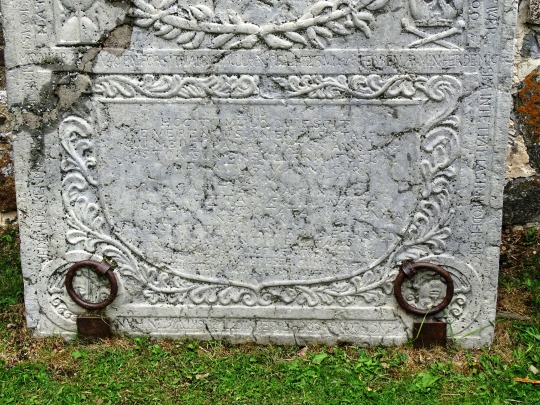






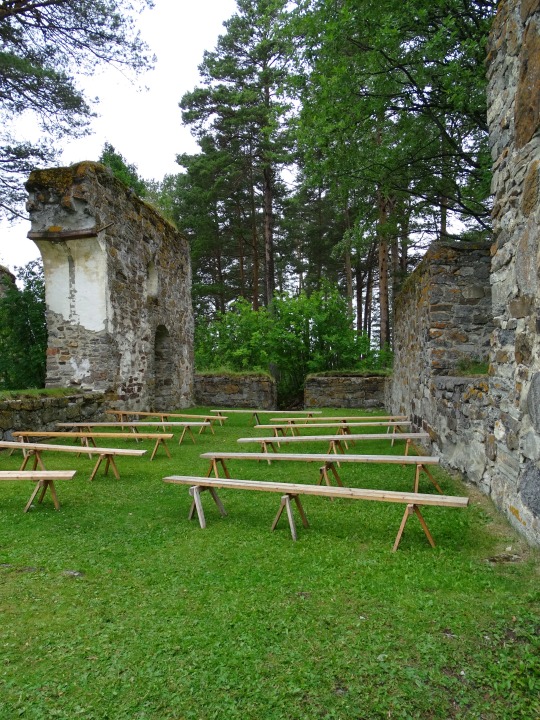

Sun Church Ruins, Sweden (No. 6)
Jämtland County is a coastal county located in the heart of the Scandinavian peninsula in northern Europe. The county borders Dalarna County to the south, Gävleborg County to the southeast, Västernorrland County to the east, Västerbotten County to the north and the Norwegian county of Trøndelag to the west. In the western part of the county lies Kölen, which stretches throughout Jämtland County and, since brömsebrofreden in 1645,forms the land border between Norway and Sweden.
The county's three major watercourses, Ljusnan, Ljungan and Indalsälven, start in the mountain range and flow east towards the Norrland coast and into the Bothnian Sea. Klarälven also begins its journey south in western Härjedalen. All rivers and rivers in the county measure a distance of 2800 km.
The bedrock in the eastern part of the county consists of urberg and extends from Flåsjön in the north down to Brunfloviken and further south. The bedrock in the eastern part consists of gneiss, diabase, amphibian, reef sound slate and in the southeastern part of rätansgranit.
The middle part of the county, the centrally equal silur area,spreads around Storsjön and also extends further north to Ström and south towards Klövsjö/Skorvdalsfjällen. The bedrock here consists of Cambrian and Silurian slate mixed with limestone, which has made this area very fert likewise.
The mountain region takes over west of Storsjön and forms the eastern part of the mountain chain that is part of the Caledonians. The highest mountain is Helagsfjället, a gnej massif that is Sweden's southernmost high mountain. The county has several mountain plateaus where Flatruet is the most famous with its 975 meters above sea level and Sweden's highest public road. Sweden's highest village is also located in the county, Högvålen, in the southern part. There are many valleys between the mountain range and the western coast towards the Norwegian Sea, which has a significant role in the climate of the central parts that is considered local maritimt.
When the last ice sheet withdrew just over 10,000 years ago, it left behind large amounts of soil, rock and blocks. The material that was disposed of directly by the ice is called moraine, which is by far the most common soil species in the county. The county also has large peatand marshes.
Nine per cent (4,500 km²) of the county's area is occupied by the county's more than17,000 lakes, where Storsjön is the county's largest and Sweden's fifth largest lake.
Source: Wikipedia
#Sun Church Ruins#Sunne kyrkoruin#Sunne#tombstone#lawn#overgrown#lichen#nature#flora#bench#original photography#summer 2020#travel#I love places like this#so much to explore#ruins#architecture#landmark#tourist attraction#free admission#Jämtland County#Östersund Municipality#Sweden#Sverige#Scandinavia#Northern Europe#fireweed
0 notes
Text
‘The Colour of children’s gender stereotypes’ - Rachel Karniol (2011)
Colour and Gender Stereotyping
Colours are often gender-stereotyped. In many countries, adults have different colour preferences for male versus female children and from birth, infants and children are exposed to colours that reflect their gender. Girls clothes, toys, and rooms in Canada (e.g., Pomerleau et al. 1990) and the United States (e.g., Shakin et al. 1985) are coloured in variations of pink, and boys clothes, toys, and rooms are coloured in variations of blue. This gender-based colour dichotomy extends to the pink versus blue congratulations cards for new born girls versus boys in the United States (Bridges 1993) and the preponderance of pink Halloween costumes for girls (Nelson 2000). Girls Lego world and Barbies social world are both dominated by pink (Falkstrm 2003) and the pink Power Ranger was the sole female in this popular children’s show. A content analysis of toy ads shows that pastels, primarily pink and purple, are used only for girls toys (Pennell 1994).
Red and green are also differentially associated with females and males. In a study of American mail-order catalogues, red was significantly more often associated with women’s, and not with men’s clothing (Frank 1990). In fact, Scherbaum and Shepherd (1987), who discuss a societal aversion to men wearing red (p. 398), found that males dressed in red were perceived by American participants as improperly attired as compared to ones in blue and as compared to women dressed in red. As for green, women prefer warm colours and green is viewed as one of the cold colours (DeLong and Cerny 1983). In fact, green is twice as prevalent in male versus female infants birth congratulations cards in the United States (Willer 2001) and an infant dressed in a blue/green striped shirt was confidently judged by American participants to be male rather than female (Leone and Robertson 1989).
In this light, colour plays an important role in children’s emergent gender stereotyping. First, reliance on colour allows children to disambiguate gender-ambiguous contexts. To elaborate, in a study with American 25 year-olds (Cherney et al. 2006a), children were shown photographs of new toys from a toy catalogue. Each toy had been classified by adults as appropriate for males, for females, neutral, or ambiguous. Colour was the primary justification in children’s classification of ambiguous toys as more appropriate for one versus the other gender. Across all toys, boys and girls did not differ in their citation of colour as the reason for classifying a given toy as more appropriate for a given gender, suggesting that even at this young age, both male and female children clearly associate colour and gender. About 95% of the children identified pink as a colour for girls whereas blue was somewhat less strongly associated with boys.
Second, colour drives stereotyped-based expectations as to the association of objects, clothing, dispositions, and activities with individuals of a given gender. For instance, as remarked by a 6-year-old American boy, if girls are going to play with trucks, they’d better play with girl trucks namely, pink ones (Gelman et al. 2004, p. 105). Even 1824-month-old North American infants associate pink with females and blue with males, as evident in a selective looking task involving violations of gender-based expectancies (Eichstedt et al. 2002). In a recent study conducted in Britain (Tenenbaum et al. 2010), drawings of figures wearing green were generally identified as boys by 6-year-old children. Similarly, Picariello et al. (1990) had 36 year old American children choose which of twin dolls, dressed in pink and blue, was associated with different adjectives (e.g., strong/gentle) and professions (firefighter/ nurse). Stereotyping increased with age, and at all ages, colour of clothing impacted children’s impressions of the weird twin.
Although there were no reported effects of gender in the above study, boys anecdotal comments are consistent with their greater distortion of gender counter-stereotypic information. Thus, a first grader insisted that a male twin, labelled clearly with a male name, but dressed in pink, was nonetheless a girl, a phenomenon Martin and Ruble (2010) discuss as identity negation. Identity negation could be interpreted as reflecting lack of gender constancy, but boys and girls of these ages do not differ in their levels of gender constancy (Karniol 2009; Levy and Carter 1989) and gender constancy at these ages does not generally predict diverse measures of gender stereotyping or gender-stereotyped behaviour (e.g., Gelman et al. 1986; Lobel and Sex Roles (2011) 65:119132 121
Menashri 1993; Serbin and Sprafkin 1986). In fact, the preponderance of evidence suggests that boys are more highly gender-stereotyped (e.g., Urberg 1982), their gender stereotypes are less flexible and more stringently held (e.g., Archer 1984; Bussey and Bandura 1999), and they engage in more distortion of gender counter-stereotypic information (e.g., Carter and Levy 1988). Maccoby (1998) contends that as part of developing a gender-based group identity, children engage in behaviours that mark themselves off from the other gender symbolically (p. 44) and that boys are more concerned with distinguishing themselves from girls than vice versa.
The rigidity of boys gender stereotypes may partially reflect the greater restrictiveness of parents with respect to gender counter-stereotypic behaviour in boys than in girls (e.g., Kane 2006). Thus, American parents hold more rigid stereotypes of males (e.g., Leaper 2002) and exert greater pressure towards conformity to gender-stereotyped behaviour in boys (Leaper and Friedman 2007). American parents apparently also actively prevent young boys from using female-stereotyped toys (e.g., there’s not many toys I wouldn’t get him, except Barbie, Kane 2006, p. 160), and female-stereotyped colours (e.g., He likes pink and I try not to encourage him to like pink just because, you know, he’s not a girl, Kane 2006, p. 160). In Spain as well, boys are apparently never dressed in pink (de Miguel 1984).
Parallel social forces may well account for girls use of a greater variety of colours. If there are fewer restrictions on girls in terms of their behaviour in gender-related domains, girls would be expected to be more flexible in their adoption of stereotypes related to gender and to colour. In fact, both male and female British children view male gender roles as more rigidly proscribed (e.g., Henshaw et al. 1992). Importantly, then, because selves are themselves gendered, they necessarily play a role in the way they structure and conceptualize the social world and the gender stereotypes that are embedded in it.
The Gender-Stereotyped Nature of Illustrations
Colouring itself can be a gendered activity. Although there are colouring books geared to both boys and girls, many colouring books are geared specifically for one gender, as found in a recent analysis of randomly selected colouring books in the United States (Fitzpatrick and McPherson 122 Sex Roles (2011) 65:119132 2010).
Colouring books for girls are dominated by fairies, princesses, and various fashion dolls whereas colouring books for boys feature vehicles, weapons, and action figures (e.g., Fitzpatrick and McPherson 2010). In Britain, colouring books featuring Disney-type princesses are generally the top selling ones for girls and ones featuring action heroes are the top sellers for boys (e.g., Lights, Camera, Action 2007). Children’s colouring books, therefore, provide rich contexts for examining children’s gender stereotypes in their use of colour as it relates to different types of illustrations.
What constitutes a gender-stereotyped illustration? Gender is often cued by name (e.g., Mickey/Minnie Mouse), appearance (including clothing and long hair, Hodge and Tripp 1986), and the gender-stereo typicality of the activities engaged in (Arthur and White 1996). The use of children’s toys in general, and those based on media figures in particular, as illustrations in children’s colouring books necessarily raises the issue of the gender-differentiation of toys. Adults use gender-related cues to differentiate the world of toys into male-appropriate and female-appropriate ones. On a scale of 19 with the end points representing appropriate only for girls or appropriate only for boys, adults rated a Mickey Mouse toy as5.01but the equivalent Minnie Mouse toy was rated 3.33 on the same scale (Campenni 1999). Similarly, the Power Rangers, Batman, and other male superheroes were rated higher than 6 on the same 9-point scale but female superheroes were rated only 3.22, (Campenni 1999), clearly showing that adults dichotomize the world of children’s toys.
The relevant question, though, is what constitutes a gender-stereotyped figure for children? Dolls, especially fashion dolls, and action figures are probably the most gender-stereotyped of all children’s toys. By 24 months, girls look more often at drawings of dolls than of cars whereas boys evidence the opposite pattern (Jadva et al. 2010). By age 3, girls select Barbies and other dolls more often to play with and by age 5, boys select more action figures to play with than do girls (Servin et al. 1999). Nelson (2005) found that boys rooms included more male figures, especially adult male action figures, whereas girls rooms included more female figures, especially baby and child figures. Of course, the content of young children’s rooms reflects both parental and children’s preferences (cf., Rheingold and Cook 1975). Yet apparently, toy purchases that reflect children’s requests are more gender-stereotyped than ones that reflect parental preferences (Fisher-Thompson 1993) and children’s Christmas toy requests are highly gender-stereotyped, with British boys asking for and getting more action figures, and girls, asking for and getting more dolls (Robinson and Morris 1986). In American children’s letters to Santa, 45% of
girls asked for Barbie dolls and 45% of boys asked for various action figures (Otnes et al. 1994).
In fact, sales of Barbie dolls and accessories account for worldwide annual sales ranging from 1 to 2 billion dollars (Casey 2008; Stanley 2005). Young girls also own other types of dolls, including Disney dolls, and Disney Princess play is also prevalent in the United States (Wohlwend 2009). As well, by 2006, approximately 120 million Bratz dolls were sold all over the world (Felgner 2006) and Bratz dolls accounted for about 40% of fashion doll sales in 2006 (McAllister 2007). The fact that Bratz did not replace Barbie in girls preferential world indicates that both types of dolls are favoured by girls. Unsurprisingly, Bratz dolls are assigned scores of 1.53 by adults, with 1 indicating only for girls and 9 indicating only for boys (Blakemore and Centers 2005).
In a parallel fashion, male action figures, which accounted for about 1.3 billion dollars in worldwide sales in 2006 (Ebenkamp 2006), are stereotypically associated with boys. In particular, both Batman and Superman are recognizable superheroes even by individuals who have never read a comic book (Bongco 2000), possibly because of their prevalence in toy stores all over the world (Fleming 1996). They have become what Macdougall (2003) calls transnational commodities. Batman in particular appears to hold a special fascination for boys (e.g., Gardner 1982), with a Warner Brothers executive commenting that Batman is literally part of the process of boyhood, especially for 611 year olds (Cooney 2004, p. 148). This fascination is evident in boys tendency to draw male superheroes, including Batman, in their spontaneous drawings (Gardner 1982; McNiff 1982). Importantly, boys play with action figures (Marsh 1999), not with dolls, denying vehemently their association with dolls (e.g., preschool boys protest Only girls play with dolls! and boys don’t have dolls, Lowe 1998, p. 218). This dissociation is also evident when in a letter to Santa a boy declares, No Barbie stuff because I’m a boy! (OCass and Clarke 2002, p. 44). In fact, playing with Barbie dolls is taken to be a sign of gender-variance (e.g., Gerouki 2010) and boys tease each other with accusations of playing with Barbie dolls (Renold 2004). In this light, then, illustrations of dolls and action figures are clearly gender-stereotyped in the eyes of children and adults.
https://www-proquest-com.ergo.southwales.ac.uk/docview/871984689?OpenUrlRefId=info:xri/sid:primo&accountid=15324
0 notes
Photo

® Postals - Urberg - Dachsberg - Schwarzwald - Baden-Württemberg - Deutschland #postals #urberg #dachsberg #schwarzwald #badenwürttemberg #aolivellacat #deutschland Copyright© 2022 - Amadeu Olivella http://www.aolivella.cat https://www.instagram.com/p/CjgGze8DCNP/?igshid=NGJjMDIxMWI=
0 notes
Photo

New friends När Öland hamnade under inlandsisen hade densamma redan hyvlat av en massa sten från den småländska graniten. När isen sedan smält av fick vi runda stenar av urberg ovanpå kalkstenen och där ligger dessa invandrade stenar fortfarande. [2, 3] #södraöland #avtryck https://ift.tt/2pj8Mzs, Foto: Urban Anjar
0 notes
Text
Coursera Week 1 Assignment
I am a data science research analyst.While I have taken Data and Text Mining courses during my master programme at National University of Singapore, and have used SPSS Statistics, SPSS Modeler, and SAS Enterprise Miner, I am interested to learn more about SAS programming. Hence, I have taken the Data Management and Visualization course at Coursera.
Link: https://www.coursera.org/learn/data-visualization
The following is week 1 assignment as directed:
STEP 1: After looking the codebooks, I have decided to choose NESARC data set. I am interested in smoking and drinking issues.
STEP 2: My first research question will be is “educational level somehow associated with smoking?” I am interested in this topic because I am curious to know whether if a person is educated, assuming he or she knows about the negative effects of smoking, will he or she still smokes?
STEP 3: My codebook selected:
131-132 S1Q6A HIGHEST GRADE OR YEAR OF SCHOOL COMPLETED
-----------------------------------------
218 1. No formal schooling
137 2. Completed grade K, 1 or 2
421 3. Completed grade 3 or 4
931 4. Completed grade 5 or 6
414 5. Completed grade 7
1210 6. Completed grade 8
4518 7. Some high school (grades 9-11)
10935 8. Completed high school
1612 9. Graduate equivalency degree (GED)
8891 10. Some college (no degree)
3772 11. Completed associate or other technical 2-year degree
5251 12. Completed college (bachelor's degree)
1526 13. Some graduate or professional studies
(completed bachelor's degree but not graduate degree)
3257 14. Completed graduate or professional degree (master's degree or higher)
160-161 S1Q7D GRADE LEVEL DURING 2000-2001 SCHOOL YEAR
----------------------------------------
1000 1. High school - any grade level
155 2. Enrolled in graduate equivalency degree (GED) program
691 3. 1st year undergraduate - never attended college before
501 4. 1st year undergraduate - attended college before
805 5. 2nd year undergraduate/sophomore
581 6. 3rd year undergraduate/junior
416 7. 4th year undergraduate/senior
103 8. 5th year/ other undergraduate
347 9. 1st year graduate/professional
240 10. 2nd year graduate/professional
245 11. 3rd year graduate/professional
1152 12. Other
36857 BL. NA, not a student in last 12 months
712-712 SMOKER TOBACCO USE STATUS
------------------
11118 1. Current user
8074 2. Ex-user
23901 3. Lifetime nonsmoker
721-721 CHECK321 CIGARETTE SMOKING STATUS
------------------------
9913 1. Smoked cigarettes in the past 12 months
8078 2. Smoked cigarettes prior to the last 12 months
22 9. Unknown
25080 BL. NA, never or unknown if ever smoked 100+ cigarettes
STEP 4 and 5: As mentioned by my father, we chinese like to say smoke (yan) and drinking (jiu) together or associate them together. Hence, I am interested to see if you smoke, will you drink alcohol also. In another words, is smoking associated with drinking?
Personal Code book added:
314-314 S2AQ2 DRANK AT LEAST 12 ALCOHOLIC DRINKS IN LAST 12 MONTHS
----------------------------------------------------
20836 1. Yes
22225 2. No
32 9. Unknown
------------------------------------------------------------------------------------------------------------------------------------
315-315 S2AQ3 DRANK AT LEAST 1 ALCOHOLIC DRINK IN LAST 12 MONTHS
--------------------------------------------------
26946 1. Yes
16116 2. No
31 9. Unknown
------------------------------------------------------------------------------------------------------------------------------------
316-316 CONSUMER DRINKING STATUS
---------------
26946 1. Current drinker
7881 2. Ex-drinker
8266 3. Lifetime Abstainer
STEP 6 and 7: Literature Review:
Stress, social support and health-related behavior: A study of smoking, alcohol consumption and physical exercise . Andrew Steptoe and et. al.
Link: http://www.sciencedirect.com/science/article/pii/0022399996000955
Abstract:
The effects of academic examination stress on health behavior was assessed in university students. It was hypothesized that the anticipation of examinations would lead to increases in cigarette smoking and alcohol consumption, and to decreases in physical activity, and that effects would be particularly salient in students with low social supports. One hundred eighty students were divided into exam-stress (51 women, 64 men) and control (49 women, 16 men) groups, and were assessed at baseline and then within 2 weeks of exams, or an equivalent point for the control group. Perceived stress, emotional well-being and health behaviors were assessed by questionnaire and interview. The exam-stress group reported significant increases in perceived stress and emotional distress between baseline and exam sessions, but responses were not affected by social support availability. The controls showed no systematic changes in health behaviors. In the exam-stress group, smoking increased by an average of 54.7% between sessions in women with few social supports, but remained stable in men. There was a decrease in alcohol consumption of 17.5% in students with high social support between sessions, while those with low social supports showed an average increase of 18.5%. Physical activity decreased between baseline and exam sessions in the exam-stress group, but was not affected by social support. The results are discussed in relation to the effects of naturally occurring episodic stress on health behaviors, and the role of social support in moderating responses.
Citation:
Urberg, K. A., Değirmencioğlu, S. M., & Pilgrim, C. (1997). Close friend and group influence on adolescent cigarette smoking and alcohol use. Developmental Psychology, 33(5), 834-844.http://dx.doi.org/10.1037/0012-1649.33.5.834
Link: http://psycnet.apa.org/record/1998-00632-010 (easier)
Abstract
The relative influence of adolescents' closest friends and their friendship group on their cigarette smoking and alcohol use was investigated in a short-term, longitudinal study of 1,028 students in the 6th, 8th and 10th grades in 2 school systems. The amount of influence over the school year was modest in magnitude and came from the closest friend for initiation of cigarette and alcohol use. Only the friendship group use predicted transition into current cigarette use, whereas only the close friend use predicted transition into current alcohol use. Both group and close friends independently contributed to the prediction of adolescents' drinking to intoxication. No difference in the amount of influence, was found between stable and unstable close friendships or friendship groups; neither grade nor gender of the adolescents related to the amount of influence. (PsycINFO Database Record (c) 2016 APA, all rights reserved)
Association between smoking and alcohol use in the general population: stable and unstable odds ratios across two years in two different countries. Alcohol and Alcoholism, Volume 42, Issue 3, 1 May 2007, Pages 252–257,https://doi.org/10.1093/alcalc/agm029Published: 01 May 2007
Link: https://academic.oup.com/alcalc/article/42/3/252/205523/Association-between-smoking-and-alcohol-use-in-the
Abstract:
Aims: The main objective of this article was to compare alcohol and tobacco consumption in the US and the Basque Country (the North of Spain) with particular attention to the association between alcohol and tobacco use. The consistency of findings was considered by analyzing data from two different years. These comparisons may provide a rational basis for exploring the associations between alcohol and cigarette use that are influenced by changes in use prevalences. Methods: Two epidemiological samples from the US, obtained in 1992 and 1996, and two from the Basque Country, obtained in the same years, were used. Sampling methodologies were similar. Questionnaires were self-administrated with the help of interviewers, and were used to define ever smokers, ex-smokers, current smokers, heavy smokers, ever drinkers, ex-drinkers, current drinkers and weekly drinkers. The associations between smoking and alcohol drinking were explored through logistic regressions. Results: The associations between current smoking and current drinking in the general population, and between ever smoking and weekly drinking among current drinkers appear very stable. In 1992 and 1996, US subjects who decided to try alcohol tended to try smoking and vice versa. In US Caucasians (particularly in 1996), heavy smoking was strongly associated with ever drinking among current smokers. In the Basque Country in 1992, there was a significant association between smoking cessation and drinking cessation among ever drinkers who also were ever smokers. Conclusions: Our analyses suggest that some associations between alcohol drinking and smoking behaviours are likely to be detected in Western countries where alcohol and nicotine are legal and easily available. On the other hand, other associations may be detected only in certain social contexts. These social contexts make the associations in subpopulations who are vulnerable to addiction, influence the results in the general population. In social contexts that exert considerable social pressure to quit smoking, such as in US Caucasians (particularly in 1996), heavy smoking was strongly associated with ever drinking among current smokers. When a social environment strongly discourages smoking and alcohol initiation (as in the US in 1992 and 1996), subjects who decide to try alcohol tend to try smoking and vice versa. The lack of social stigmatization of smoking and drinking in te Baque Country in 1992 may help to explain the significant association between smoking cessation and drinking cessation among ever drinkers who also were ever smokers.
Andrew Steptoe and et. al. research on the association between academic stress, smoking and alcohol consumption, and then study on whether social support helps. Urberg and et. al. study on the close friend and group influence with smoking and alcohol consumption. Hence, our study can have limitation that academic stress and influences can also causes smoking or alcohol consumption.
The third article shows that there are some association between smoking and alcohol.
As such, hypothesis is that education (S1Q6A) determines chances of people smoking (CHECK321) (need future study to remove academic stress factor), and majority of the smokers will also consume many alcohol (S2AQ2).
Thank You.
1 note
·
View note
Photo






Mix|city - Tirana, Albania - Melita Studio 2016
Team Melita: Prisca Arosio, Caroline Urberger
Competition Info: “Transformations that matter”, TAW 2016 (Tirana Architecture Week), Albanian Ministry of Culture
Location: Tirana, Albania
Exhibition: 18th October 2016 at Destil Hostel Albania
Starting the analysis from a large scale we observe the diverse urban grid of the city. This is our starting point; the grid of the city. The parameters for the grid size are the buildings scales, streets scales and urban density. We represent this concept through the use of patterns. We examine that in the city of Tirana there are mainly three levels of Urban Fabric. The project site is located in between the medium and small scale grid. We read the site as a collection of Tirana patterns. In our design process that heterogeneity of the urban fabric is considered as a quality to be underlined. We can find four typologies of the city inside of the plot: block, linear block, independent house and agglomerate. Moreover, the plot is close to the city center and around it there are university facilities, embassies and housing blocks. The site is a junction between all of these functions. Therefore, we emphasise the features of the urban typologies through an architectural and functional requalification. The project proposes the renovation of buildings with new activities such as cultural center, small shops and community garden. By creating more public spaces we enhance the connection between university, city center and residential area. The aim is to give life to a meeting point, where people from different ages and backgrounds can interact. The sidewalk links the four typologies and functions on the pedestrian level, as well as making the crossing safer. Furthermore, a small square is added providing outside space, like terraces, to local activities. The project is seen as a starting point for a bigger scale development. Our proposal is an answer for this specific context but the strategy could spread out all over residential districts and make the city more liveable and connected.
0 notes
